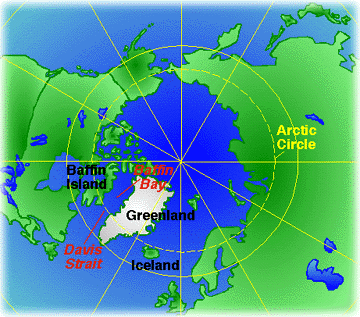
Have you ever thought about being a scientist? When I was a kid, that was
what I wanted to be! I even set up a laboratory in our basement where I could
do experiments. I raised brine shrimp, tested the rocks in my collection, and
made volcanoes that erupted.
In college, I studied plant and animal science. Because I loved to travel, I
decided to work in the Andes Mountains in South America, helping farmers grow
better crops. That was a fascinating experience! What amazed me the most was
seeing how the people grew all of their own food on really steep slopes way
up at 10,000 feet elevation. They knew how to grow dozens of different kinds
of potatoes - red potatoes, yellow potatoes, white potatoes, even purple
potatoes - all in the same field!
After a few years, I learned that there was something I liked even better
than doing science - and that was doing science with kids. So I became a
teacher. I taught for eight years in Oregon and Washington. I even spent two
years teaching in a tiny fishing village in Mexico. The older people in the
village knew a lot about science, even though they never went to school and
some of them didn't know how to read or write. Fifty years ago, when the old
people were kids, there weren't any villages. Everyone lived by hunting and
gathering their food in the desert. They survived by doing the same thing
scientists do: making careful observations, asking questions, and testing out
hypotheses. They learned so much about the ecology of the desert, they know
things that even the scientists don't know! Just like those farmers in the
mountains in Peru! While I was there, I worked with the elders and the
teachers to design a science program that taught the students the things
their grandparents had learned and know how to do.
Now I live in the Boston area, and I have another great job. I'm the
elementary science specialist in Belmont. I don't have my own class, but I
get to help all of the teachers in kindergarten through fifth grade teach
science to their classes. We have a great program in Belmont, so I get to do
a lot of different things with the students. I've learned so much about
electricity and astronomy and geology just by working with the students. They
always ask great questions that make me think. That's what I love about
science - there's always more to learn!

Sea Ice Trials aboard the U.S. Coast Guard ice breaker Healy
Dr. Kelly Falkner, Oregon State University
I am going to spend two weeks in the Arctic on board the U.S. Coast Guard ice
breaker Healy with my teacher colleague, Susan Klinkhammer, and a group of
scientists. Susan and I are very lucky to be able to collaborate on this
project and to have the opportunity to ride aboard the Healy on its maiden
voyage to the ice. The Healy is a brand new ship, and it is the only ice
breaker in the United States that will be dedicated to doing scientific
research in the Arctic.
Susan and I will be working with scientists who are interested in learning
more about the ice at both poles. They believe that there are amazing secrets
frozen in this ice. These secrets may give us clues about the earth's
climate, and how it changes. The scientists are also interested in what the
bottom of the ocean looks like. You might think of the ocean floor as being
flat like a pancake, but it isn't. There are mountains and valleys and even
active volcanoes, just as there are on land. Using new and modern technology,
they'll be able to map the ocean floor more accurately and to see the
landforms hidden beneath the ice!
We will also be helping scientists measure the speed of the ocean currents
using sonar, collect seawater for testing, and examine large drift nets towed
behind the ship to see what kind of zooplankton and phytoplankton exist in
these waters. Even though these plants and animals are very tiny, they are
the basis for life in the ocean. While at sea, we hope we'll see a lot of
larger wildlife, too. We might see whales, walruses, and even polar bears!
We invite you to join us on this amazing scientific adventure. We'll write to
you in our journal from the field every day telling you what we saw and did.
You can write back to us with questions. Even though communications onboard
an ice breaker in the Arctic Ocean can be a little dicey, we hope you'll give
it a try. If we can't answer your e-mails while we're at sea, we promise to
write back once we're back on land.
So fasten your lifejackets and join us on this Arctic adventure!

